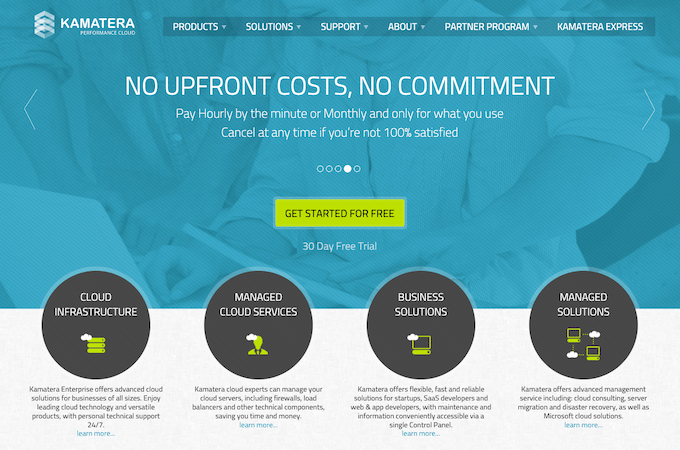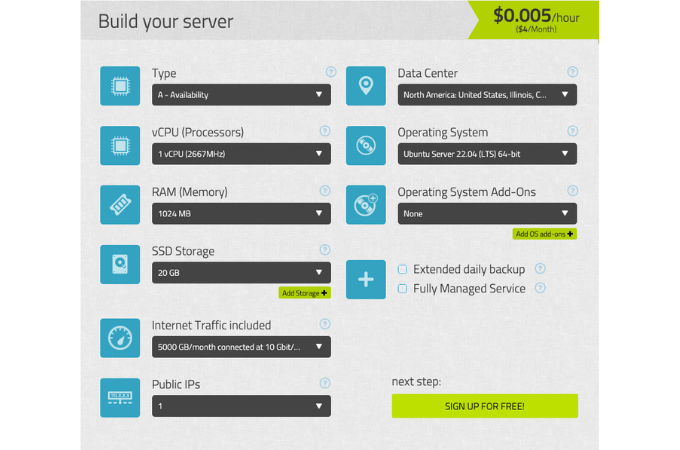Web hosting services offer critical storage and computing resources to ensure your website and applications are readily available to online visitors. However, there are many different hosting services to choose from, including cloud and shared hosting. This post will explore the fundamental differences between these two hosting types to help you make an informed decision.
While it’s arguable that most people benefit more from cloud hosting than shared hosting, you can only come to a solid conclusion by thoroughly comparing the two hosting types.
Therefore, below are the key differences between cloud and shared hosting.
1. Hosting Architecture
The most apparent and instantly discernable difference between cloud and shared hosting lies in the hosting architecture. Hosting providers offer each service differently. So it’s difficult to confuse the two hosting types if you know how they are delivered.
Shared hosting falls under the category of so-called traditional hosting. Other traditional hosting types include dedicated and virtual private server hosting (VPS). With traditional hosting, a service provider houses your website on a single server.
To differentiate shared hosting from other traditional hosting types:
Shared hosting is when the service provider hosts multiple websites on a single server. Multiple websites draw from the same server resources, including disk space, memory, central processing unit (CPU), and bandwidth.
Dedicated hosting is when the service provider allocates the entire server to only one website or web application. Therefore, the website doesn’t have to share the server resources with additional applications.
Virtual Private Server (VPS) hosting is a middle ground between shared and dedicated hosting. There’s still only one physical server. However, the server is split into multiple virtual environments or virtual servers. Each virtual server has its own resources, including memory, processing, storage, and bandwidth. Rather than numerous websites pooling from the same physical server, each is allocated its own virtual environment with private resources.

Now on to cloud hosting, which is a relatively new concept that is quickly gaining popularity. It’s worth noting that cloud hosting is more fundamentally similar to VPS hosting than shared hosting. Cloud and VPS hosting both require virtualizing a physical server.
So what does it mean to virtualize a physical server? The process involves installing virtualization software in the physical server to partition it, thus creating multiple virtual machines (VMs). Each virtual machine works like a standalone server with its own operating system (OS) and resources.
Here’s where the similarities between VPS and cloud hosting end. Where VPS hosting creates multiple independent virtual servers from one physical server, cloud hosting does the reverse, and instead, the hosting provider creates a virtual server from multiple physical servers.
Cloud hosting allows you to utilize computing resources from multiple servers as if they were a single machine. Furthermore, it is often the case that the servers are dispersed across the globe. Therefore, your website data, files, and configuration settings are stored on multiple servers, so you don’t have to worry about a server outage.
These servers are also interconnected, so your data and configuration settings are always available.
2. Resource Allocation
Another big difference between cloud and shared hosting is how each type of hosting allocates resources. It’s an essential factor since server resources impact the performance of your website. For example, the website may load quickly or slowly depending on the website’s allocated disk space, CPU, bandwidth, and memory.
As the name suggests, shared hosting divide the server’s resources among multiple websites. It’s a good strategy for reducing hosting costs since the users split the cost. However, it also means that each website has fewer available resources.
Additionally, shared hosting is ill-equipped to handle sudden traffic spikes. As a result, you can quickly max out your resources, causing decreased performance or potential downtime. Similarly, other websites on the shared server can reduce your performance if they take up too many server resources.
Most shared hosts solve the problem of one website hogging the server’s resources by imposing hard limits on server usage. For example, the web host may cap resource usage such as CPU, physical memory, or input/output. Unfortunately, these limits mean the server doesn’t scale to handle sudden or unexpected bursts in traffic.
It’s worth noting that sharing resources isn’t always bad. For example, a small personal blog or hobbyist website may never use up all the resources of a dedicated server. So shared hosting makes sense since the host can still allocate sufficient resources for the small website.
Cloud hosting is far more generous with resource allocation. In many cases, the host provides unlimited resources. It’s also not unusual for the host to upscale and downscale server resources to match your traffic demands in real-time.
Therefore, cloud hosting is highly adaptable to sudden traffic spikes. You don’t have to worry about not having enough resources to run the website optimally. Many cloud hosts also offer autoscaling, allowing the server to automatically adjust your resources based on traffic demands in real-time.
3. Scalability
Scalability refers to the server’s ability to increase performance in response to your website’s changing system processing demands. For example, most websites target a monthly traffic growth between 10% and 20%. Therefore, you need a web host that can scale to meet your growing demands.
Generally, shared hosting isn’t scalable because you can’t add more resources once you hit your limit. Instead, you’ll need to upgrade to a different plan, such as VPS or dedicated hosting. Some websites shared hosts offer scalable bandwidth, but even this is capped beyond a certain point.
Scalability also works in the opposite direction. Ideally, you shouldn’t monopolize resources that you aren’t going to use. The extra resources could easily be allocated to another user that needs a performance boost.
Again, shared hosting plans typically don’t scale resources up or down. Therefore, you might end up paying for resources you don’t use.
The great thing about cloud hosting is that scalability is built into the cloud web architecture. It’s one of the significant reasons cloud hosting has seen such an explosion in popularity. Remember that cloud hosting uses multiple virtual servers concurrently?
That means there is a ready pool of additional resources in case of a sudden traffic surge. Furthermore, the extra resources can be allocated in a few clicks or even automatically. Hence, cloud hosting users enjoy near-instant scalability.
You don’t have to worry about downtime or performance issues while you contact your hosting provider to migrate you to a higher plan. The quick scalability is ideal for websites that experience traffic spikes during sales, promotional campaigns, or peak seasons.
4. Pricing Structure
You’ll often notice a significant difference in pricing models between cloud and shared hosting. Most shared hosting providers charge a fixed monthly fee. Additionally, most providers offer steep discounts for long-term contracts, such as if you pay an annual subscription upfront.
Shared hosting is also standard across most service providers. You’ll likely pay a fixed amount for bundled resources on a shared server. For example, the host may charge $1.99 monthly for 50Gb SSD storage, 768MB RAM, and 100GB bandwidth.
The shared hosting provider also typically handles the technical aspects like server maintenance, security updates, and system updates. However, many shared hosts also provide a cPanel. You can use the cPanel for website management tasks like publishing websites, organizing web files, creating email accounts, and managing domains.

Most cloud hosting providers have a pay-as-you-go model. You’ll only pay for the resources you need. And, with deep infrastructure knowledge, it’s possible to save on resource spending. For example, more efficient policies for how employees copy and version data can reduce the monthly storage cost.
It’s also worth noting that cloud hosting is an umbrella term. There are different types of cloud hosting depending on your requirements. These include:
Software as a Service (SaaS) – This is the most common type of cloud hosting. The host provides a complete ready-to-use platform.
Platform as a Service (PaaS) – This cloud hosting distributes responsibilities. For example, the host may cater to the operating system and system software while you handle the applications.
Infrastructure as a Service (IaaS) – This hosting type offers the most control over the infrastructure. While the host owns the virtual server, you can install any operating system, software, or application you want.
Finally, shared hosting is significantly cheaper than cloud hosting. The price difference isn’t surprising, given that shared hosting distributes costs among multiple website owners. However, you can get affordable cloud hosting on a tight budget.
For example, Hostinger’s cloud hosting plans start at $9.99 per month and renew at $19.99 per month. It’s more expensive than your typical shared hosting plan. However, it’s still affordable enough for most small businesses.
5. Latency
Latency refers to the time it takes to access data over a network, usually measured in microseconds (µs) or milliseconds (ms). Multiple aspects are involved in latency, including the distance between two ends, the amount of time required to go through load balancers, firewalls, proxies, and routers, and the queue in case of congestion. Therefore, low latency is preferable over high latency.
Server location plays a significant role in latency. Your server should be as close as possible to your audience, and this ideal situation isn’t possible with shared hosting. While users in your host country may not experience high latency, visitors browsing from geographically distant locations may experience lower speeds.
Cloud hosting is terrific for minimizing latency. The hosting provider typically has multiple servers in different parts of the globe. The infrastructure means that website visitors are directed to the server closest to their location.
Similarities Between Cloud Hosting and Shared Hosting
There are also similarities between cloud hosting and shared hosting.
First, most hosting providers offer an uptime guarantee. You’ll typically find the terms and conditions for the guarantee in the host’s service level agreement (SLA). Uptime refers to the percentage of time your website is available to users, so the uptime guarantee helps gauge the host’s reliability.
Most service providers also offer managed services regardless of your hosting type. In this case, the web host is responsible for the technical aspects. For instance, the hosting provider may offer automatic security patches or automatic daily backups as part of the package. Most web hosts also provide a ready-to-use platform with minimal installations and configurations required.
Additionally, the web host provides the computing power required to power your website. Naturally, these resources vary depending on the hosting type. However, you can count on storage, bandwidth, RAM, and CPU resources.
Many hosts also offer security features as part of your package. You’ll see features like free SSL, firewalls, DDoS prevention, and malware scanning included in most hosting plans. Generally, even shared hosting offers top-notch security features despite the considerably lower price point.
Finally, most web hosts provide customer support if you need professional assistance. The support level may vary depending on your plan. However, the web hosts offer support using multiple mediums, including live chat, email, and phone.
Final Thoughts About Cloud Hosting vs. Shared Hosting
Cloud and shared hosting have more differences than similarities. Therefore, it shouldn’t be difficult to choose the better option. Cloud hosting offers more advantages for most people, including low latency, better performance, and seamless scalability.
However, there are instances when shared hosting is the better option. This is especially true if you take the time to compare the best shared hosting plans. For example, you can choose shared hosting for a basic website that doesn’t take up too many resources.
Nevertheless, there are a few things to look for despite the hosting type you choose. First, consider factors such as uptime, renewal price, bandwidth, and customer support. These crucial factors should help you find the best service provider for your web hosting needs.
